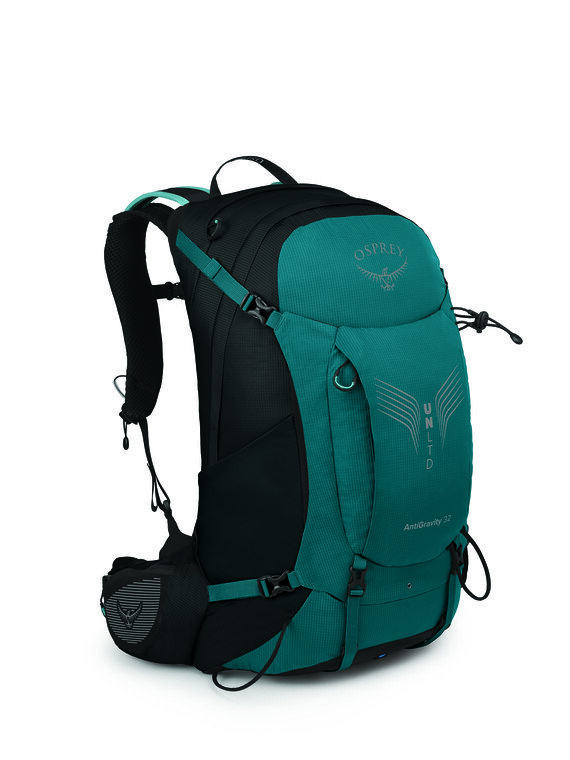There’s something magical about embarking on a hiking or adventure trip, escaping the hustle and bustle of everyday life to immerse yourself in the breathtaking beauty of nature. As your boots hit the trail and the fresh air fills your lungs, you’re reminded of the profound connection between humans and the natural world. Whether it’s conquering a challenging peak, navigating through dense forests, or simply basking in the serenity of a secluded spot, these experiences have a way of revitalizing the spirit and offering invaluable life lessons.
To make the most of your next outdoor adventure, it’s essential to properly pack your gear, and with the right guidance, you’ll be well on your way. In this blog, we’ll provide a comprehensive guide to packing your Osprey backpack, ensuring that you’re prepared and comfortable every step of the way.
Step 1: Assess your gear
Before we begin, it’s essential to know what you’ll be carrying. Take some time to gather all your gear and lay it out in front of you. This will give you a clear idea of what needs to be packed and help you prioritize items based on weight and frequency of use. Don’t forget to include food, water, and any personal items you’ll need.
Step 2: Familiarize yourself with your backpack
Take a moment to study your Osprey backpack. Notice the various compartments, pockets, and attachment points. This will help you make the most of your backpack’s features and ensure you pack everything efficiently.
Step 3: Waterproof your belongings
Weather can be unpredictable, so it’s essential to keep your belongings dry. Use waterproof bags or dry sacks to protect sensitive items like electronics, clothes, and sleeping bags. You can also line the inside of your backpack with a trash compactor bag to add an extra layer of protection.
Step 4: Pack the bottom of your backpack
Start by packing heavy, less frequently used items at the bottom of your backpack. This can include your sleeping bag, sleeping pad, and extra clothing. Make sure these items are compressed and snugly fit to create a stable base for your pack.
Step 5: Pack the middle of your backpack
The middle of your backpack is ideal for heavier items that you might need to access during the day, such as your cooking gear, food, and water reservoir. By placing these items in the middle and close to your back, you’ll ensure that the weight is distributed evenly and comfortably.
Step 6: Pack the top of your backpack
Lightweight items and essentials you’ll need quick access to should be packed at the top of your backpack. These can include your rain jacket, first aid kit, map, and snacks.
Step 7: Utilize external pockets and attachment points
Your Osprey backpack likely has a variety of external pockets and attachment points. Use these to store smaller items that you need to access frequently, such as water bottles, sunscreen, and a headlamp. You can also use the attachment points to secure larger items like trekking poles or an ice axe.
Step 8: Balance your backpack
As you pack your backpack, periodically try it on to ensure that the weight is distributed evenly and comfortably. Adjust the load as necessary to achieve the optimal balance.
Step 9: Perform a final check
Once you’ve finished packing, do a final check to make sure all zippers, buckles, and straps are secure. You should also ensure that nothing is dangling or loose, as this can cause discomfort or become caught on branches during your hike.
Congratulations! Your Osprey backpack is now packed and ready for adventure. Remember that efficient packing is a skill that improves with practice, so don’t be afraid to experiment and find the packing method that works best for you. Have a fantastic trip!
Osprey Backpack FAQs:
Q: What is the best way to pack a backpack for weight distribution?
A: The ideal weight distribution involves placing heavy items in the middle of your backpack, close to your back, with lighter items at the top and bottom. This ensures stability and reduces strain on your back and shoulders.
Q: How do I pack my backpack for a multi-day hike?
A: For multi-day hikes, prioritize lightweight and compact gear, and organize items based on weight and frequency of use. Pack extra clothing, sleeping bags, and sleeping pads at the bottom, heavy items like food and cooking gear in the middle, and essentials in the top and external pockets.
Q: How can I waterproof my backpack and gear?
A: Use waterproof bags or dry sacks for sensitive items like electronics and clothing. You can also line the inside of your backpack with a trash compactor bag to add an extra layer of protection.
Q: How do I pack a backpack for a day hike?
A: For a day hike, focus on essential items such as water, snacks, a first aid kit, map, rain jacket, and sunscreen. Use the backpack’s compartments and pockets to keep items organized and easily accessible.
Q: Should I use compression sacks or packing cubes for organizing my gear?
A: Compression sacks are ideal for compressing bulky items like sleeping bags and clothing, while packing cubes can help keep smaller items organized. Choose based on your specific needs and preferences.
Q: How much weight should I carry in my backpack?
A: As a general rule, your backpack should not exceed 20-25% of your body weight. Keep in mind that carrying a lighter load will make your hike more enjoyable and reduce the risk of injury.
Q: How do I attach gear to the outside of my Osprey backpack?
A: Use the external attachment points and straps to secure larger items like trekking poles or an ice axe. Be sure to secure them properly to avoid any loose or dangling items.
Q: How do I adjust my Osprey backpack for a comfortable fit?
A: First, adjust the hip belt so it sits on your hips and not your waist. Next, tighten the shoulder straps, followed by the load lifters and sternum strap. Make sure the weight is evenly distributed and the backpack feels comfortable and secure.
Q: How do I clean and maintain my Osprey backpack?
A: To clean your backpack, use a mild soap and water solution with a soft brush or cloth to gently scrub the fabric. Avoid using harsh chemicals or submerging the backpack in water. Allow it to air dry, and regularly inspect it for any wear or damage.
- Q: How can I efficiently pack food for a hiking trip? A: Opt for lightweight, non-perishable, and high-calorie foods like nuts, dried fruits, and energy bars. Repackage food into reusable containers or ziplock bags to save space and minimize waste.








